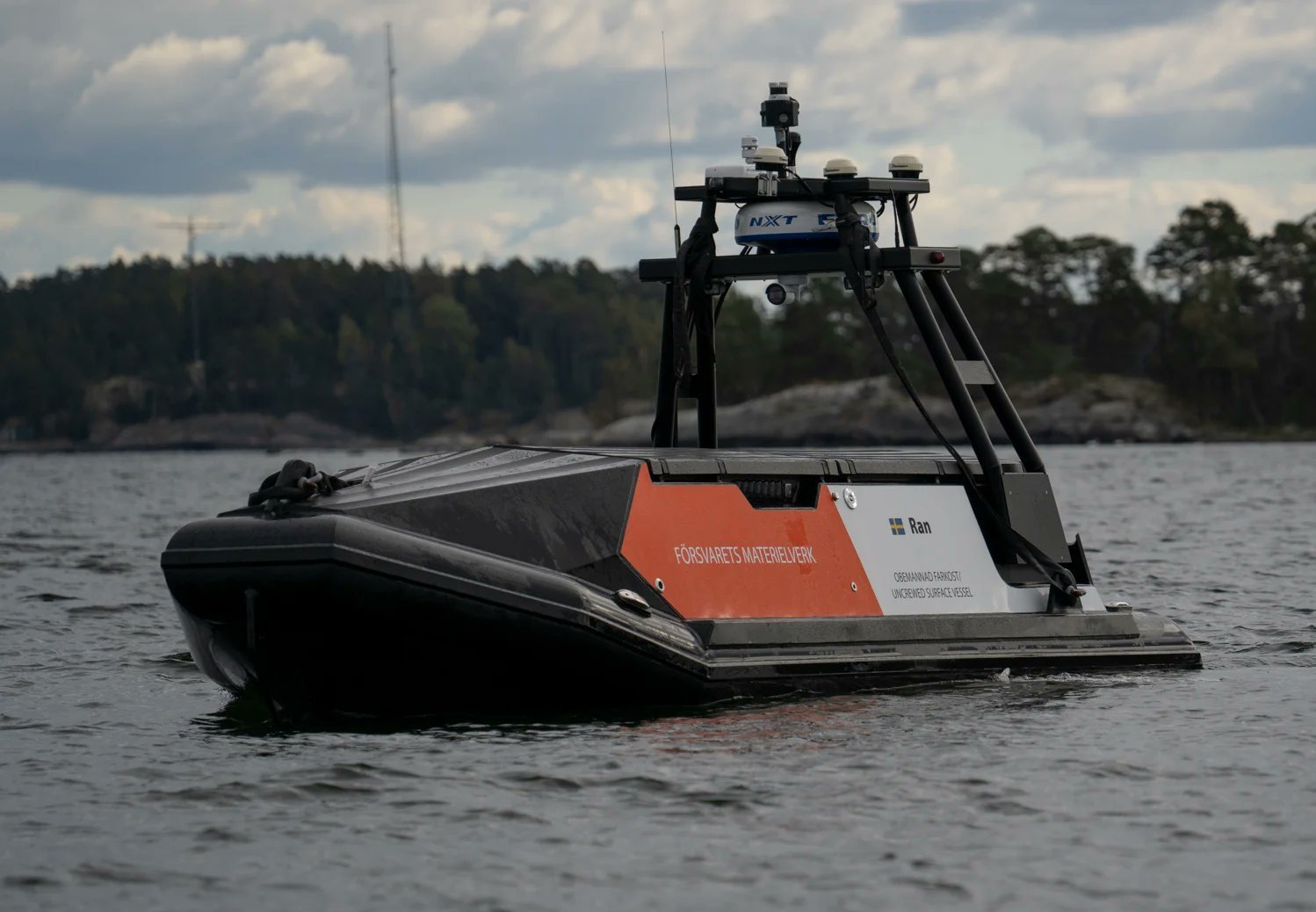Copyright defence-blog

The Swedish Defence Materiel Administration (FMV) has conducted new trials with an unmanned surface vessel (USV) in Hårsfjärden, south of Stockholm, as part of a three-year research and technology program commissioned by the Swedish Armed Forces. According to FMV, the tests focused on the vessel’s software, range, maneuvering, and emergency stop systems. “We have purchased a small boat, a concept demonstrator, that we can use for testing. We want to see how it works, how it behaves, and what can be done with it,” said Johanna Norén of FMV’s amphibious, support, and base systems division. The project, which runs under the authority of the Swedish Armed Forces, aims to build knowledge and operational understanding of unmanned maritime systems. “We look, for example, at the war in Ukraine, where USVs play an important role in the Black Sea. And with this project, we want to build knowledge,” said FMV technical adviser Robert Sandgren. The boat, named Ran after the Norse goddess of the deep sea, is a Norwegian-made model also used by the Norwegian Home Guard, as well as the Spanish, Danish, and Portuguese navies. FMV noted that the design is deliberately general so that it can simulate different types of craft for training or research purposes, including logistics transport, patrol roles, or seabed mapping missions. “It’s a proven system. The boat can be configured to represent different applications, from transporting cargo to serving as a patrol platform. It could also be fitted with sensors to map the seabed. The vessel is maneuverable enough to test and evaluate a range of systems,” Sandgren said. The USV is equipped with cameras in all directions and a Lidar unit that provides a precise 3D image of the surrounding environment to support safe navigation. The boat can be operated remotely via manual control or preprogrammed routes, and it includes a collision avoidance function. FMV project manager Agnes Moberg said that while the system is established, some parts, such as autonomous navigation, are still under technical evaluation. “Even though it is a proven system, some elements — particularly related to the ability to avoid collisions — have a lower technical maturity level, and the project wants to explore that,” Moberg said. During the tests, the vessel was remotely controlled and monitored from a nearby support boat via Wi-Fi or 4G connection. The team conducted sea trials to assess steering capability in rougher conditions and fine-tuned the onboard systems based on previous results. Sandgren said the test team had planned to conduct weather trials but instead simulated wave conditions using another military craft. “We want to see if we can maintain control, as we have seen in earlier tests that steering becomes notably harder in heavier seas,” he said. Over the coming year, FMV will continue evaluating the vessel and developing procedures for potential procurement. The program also includes regulatory and market analysis to determine how unmanned surface systems might be integrated into Sweden’s defense structure. Moberg said the ongoing trials are a major step in developing operational understanding of maritime autonomy. “The idea is that these and future tests will help answer questions about how the Swedish Armed Forces can and should use unmanned systems,” she said.



